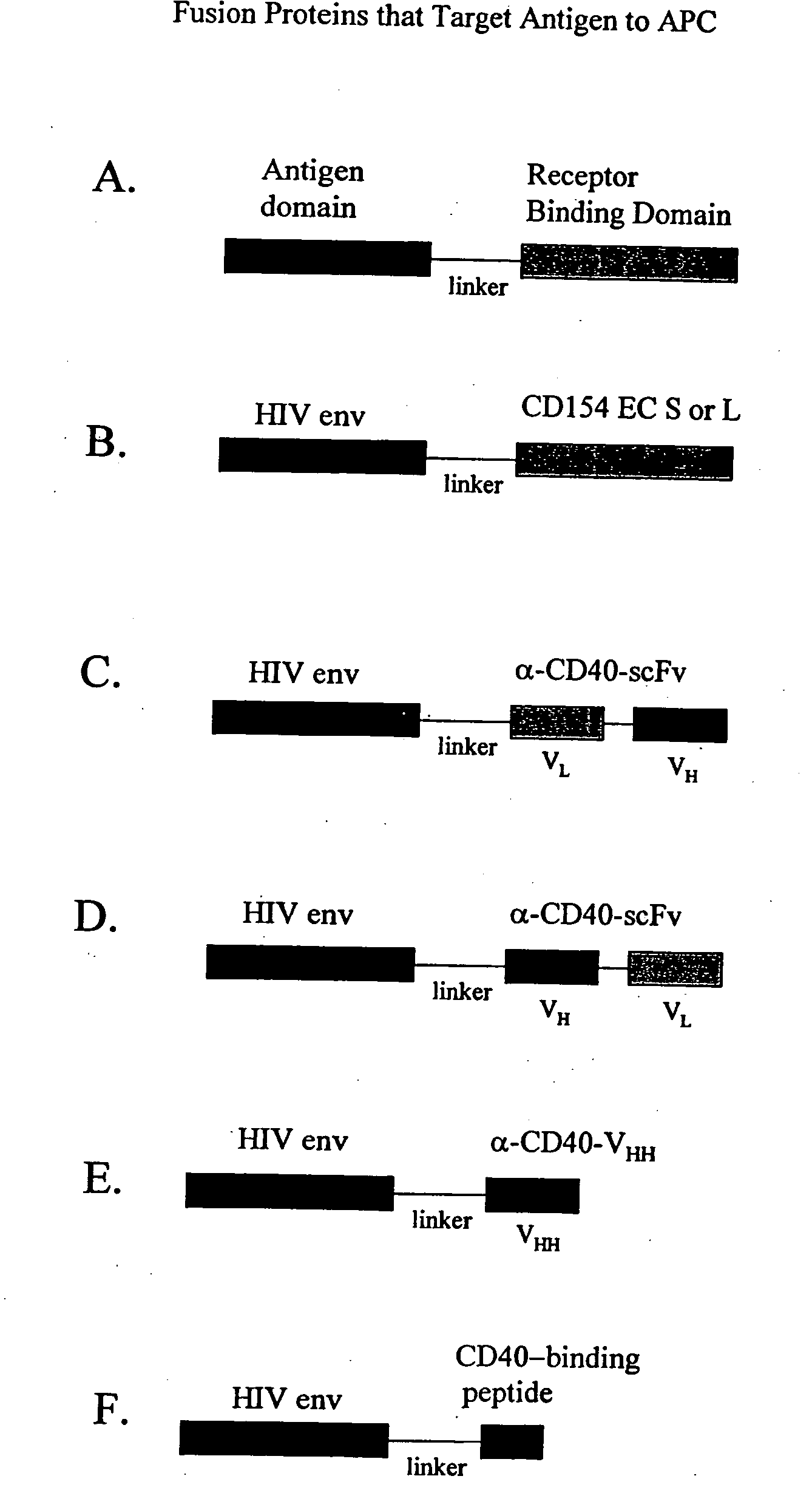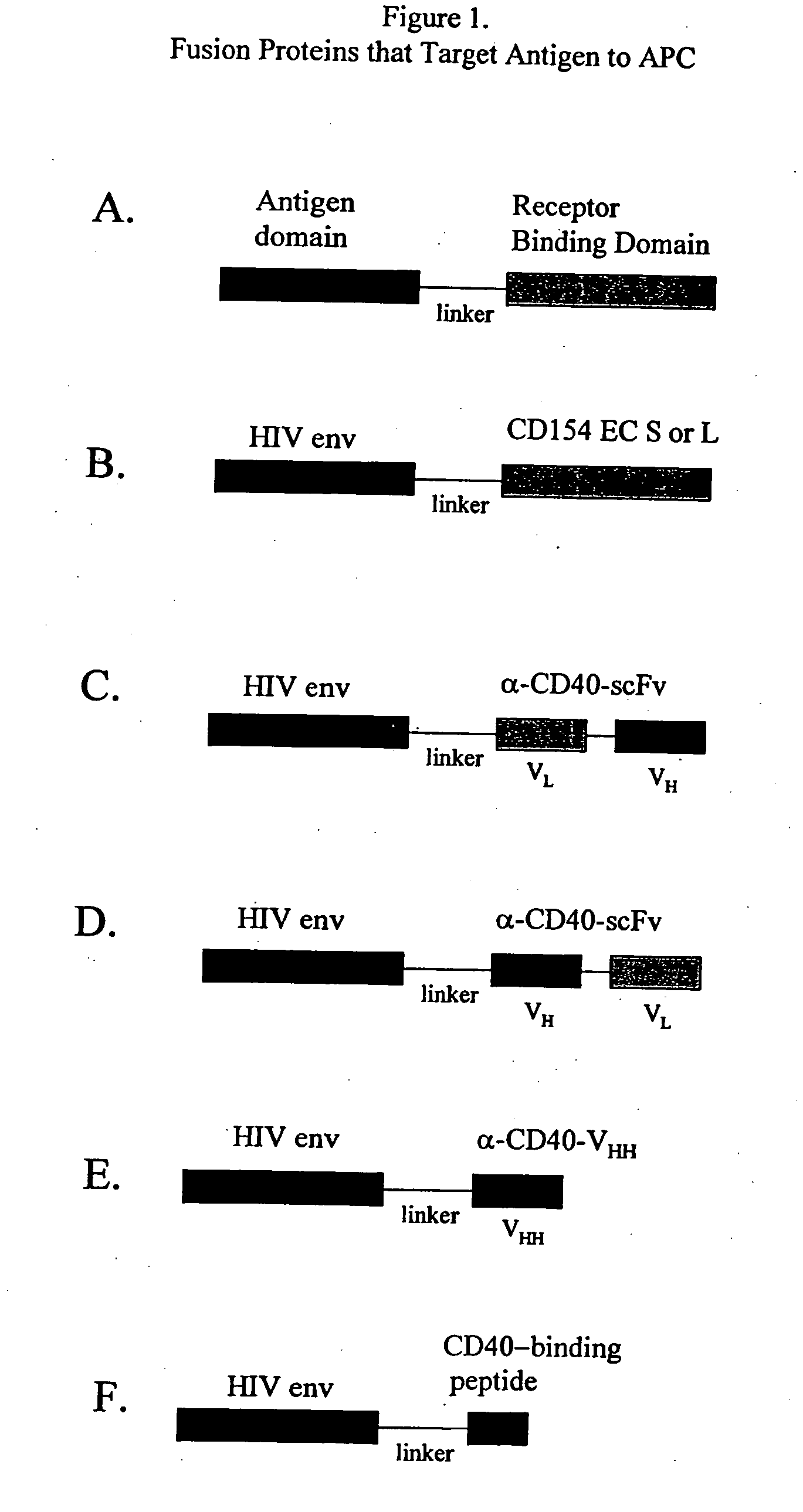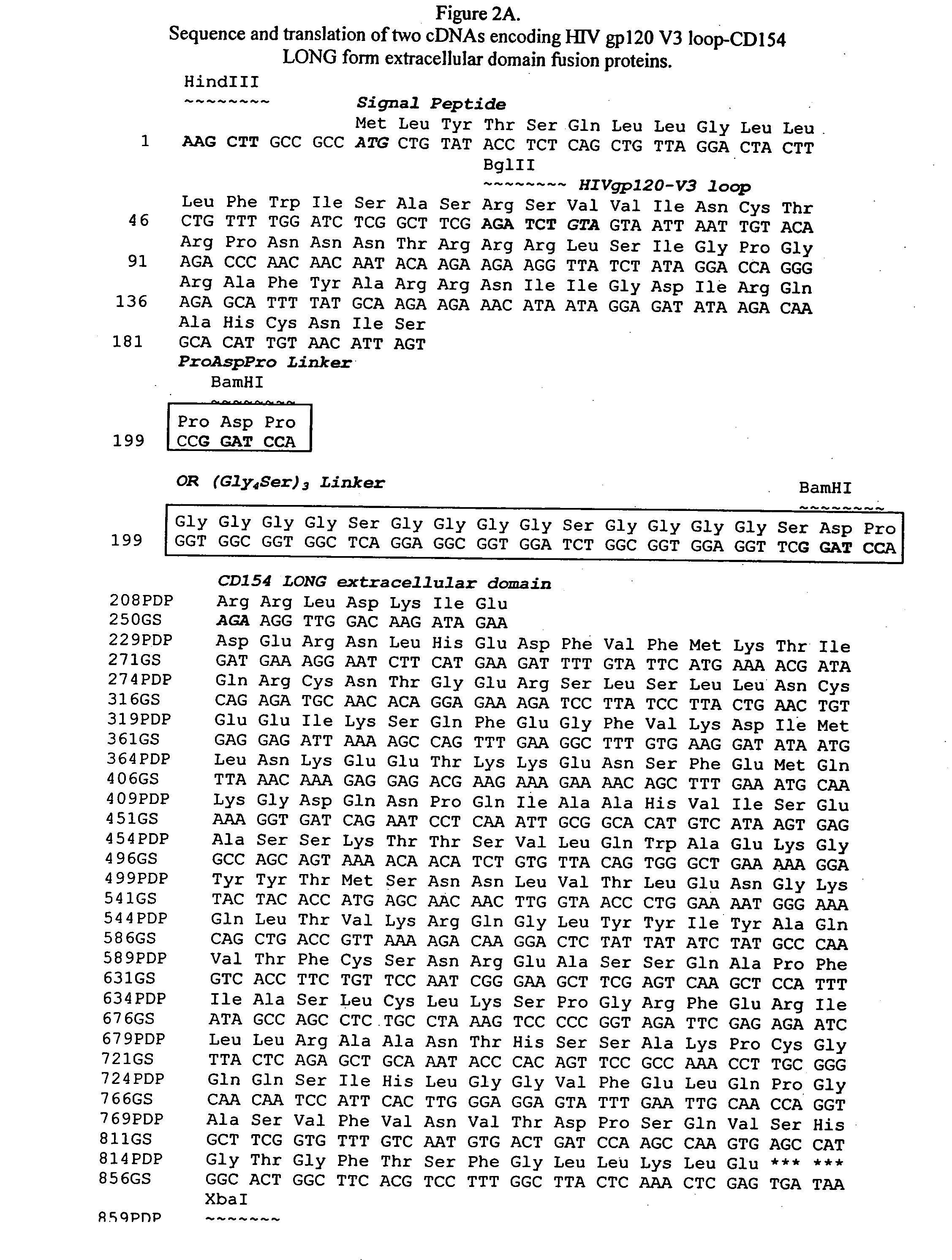DNA vaccines encoding antigen linked to a domain that binds CD40
a technology of antigen and domain, applied in the field of dna vaccines, can solve the problems of inability to induce strong and sustained humoral immune responses of dna vaccines, and insufficient protective effect of dna vaccination
- Summary
- Abstract
- Description
- Claims
- Application Information
AI Technical Summary
Benefits of technology
Problems solved by technology
Method used
Image
Examples
example 2
[0065] In an alternative preferred embodiment, the V1 and V2 domains of gp120 are removed and only the V3 loop domain from HIV gp120 is encoded on a BglII-BamHI fragment and fused to the signal peptide and the CD154 extracellular domain to create the vaccine, as illustrated in FIG. 2A and B. This antigen domain is separated from the CD154 short (FIG. 2B) or long extracellular domain (FIG. 2A) by a peptide linker encoding the amino acids (ProAspPro), or a longer peptide linker encoding the amino acids (Gly4Ser)3.
[0066] The V3 loop was PCR amplified from pV75 (gp89.6), a plasmid containing HIV gp120 from isolate LAV, using the following primer set: [0067] The antisense primer encoding a ProAspPro linker is SEQUENCE ID NO: 9 or V3PDPr 5′-gtt att cca tgg atc cgg act aat ctt aca atg tgc ttg-3′[0068] The sense primer fusing the antigen to the signal peptide is SEQUENCE ID NO: 10 or V3Bg12f [0069] 5′-gta cag cta aat aga tct gta gta att aat tg-3′[0070] The antisense primer encoding a (Gly4...
PUM
| Property | Measurement | Unit |
|---|---|---|
| volume | aaaaa | aaaaa |
| volume | aaaaa | aaaaa |
| volume | aaaaa | aaaaa |
Abstract
Description
Claims
Application Information
 Login to View More
Login to View More - R&D
- Intellectual Property
- Life Sciences
- Materials
- Tech Scout
- Unparalleled Data Quality
- Higher Quality Content
- 60% Fewer Hallucinations
Browse by: Latest US Patents, China's latest patents, Technical Efficacy Thesaurus, Application Domain, Technology Topic, Popular Technical Reports.
© 2025 PatSnap. All rights reserved.Legal|Privacy policy|Modern Slavery Act Transparency Statement|Sitemap|About US| Contact US: help@patsnap.com



